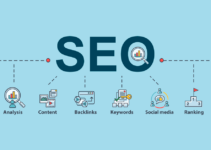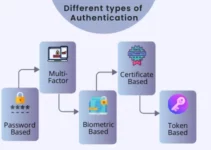Are you wondering how to make your ecommerce copywriting sales as persuasive and impactful as possible?
Crafting quality web content that has the potential to spark conversions can be challenging, especially if your knowledge of SEO, messaging techniques, and customer psychology is limited.
Luckily, with an understanding of copywriting fundamentals in mind and some experimentation on live platforms, you will soon have sales-ready ecommerce copy that entices visitors and captures all the necessary details for a successful sale.
In this blog post we’ll look at specific steps to take when perfecting your ecommerce copy so that it maximizes engagement from customers and emotes credibility within every sentence.
What is Ecommerce Copywriting?
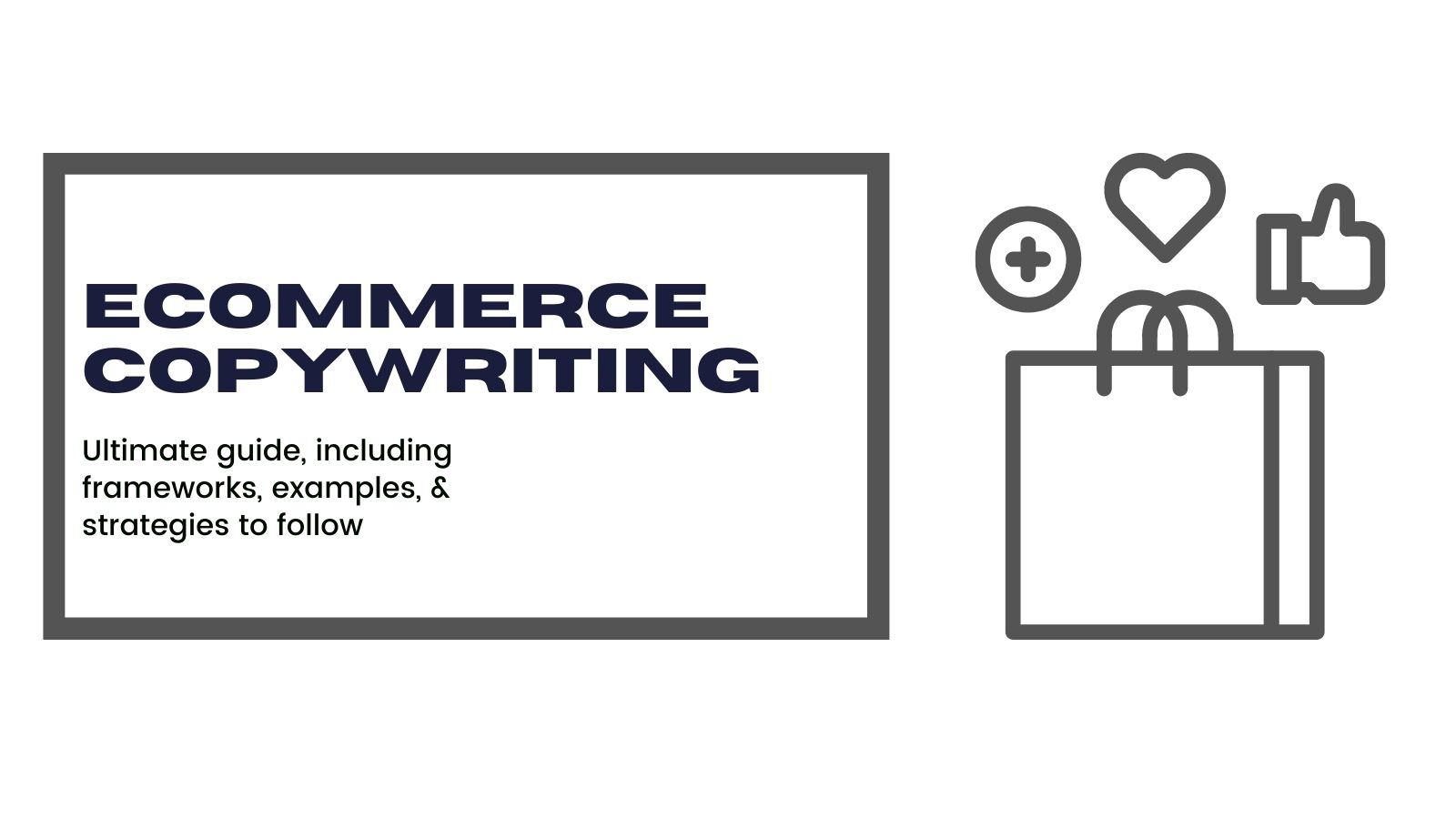
Ecommerce copywriting is a form of professional writing that focuses on creating promotional content for ecommerce websites.
This type of copywriting helps to promote products and services online in order to persuade potential customers to make a purchase.
It can include product descriptions, blog posts, emails, social media posts, banner ads and more.
Ecommerce copywriting can be a great way for businesses to stand out from their competitors and gain an edge in the competitive online marketplace.
It’s important for companies to find the right words when describing their products in order to attract customers. A well-crafted piece of ecommerce copy can help drive sales and increase revenue for a business.
The goal of ecommerce copywriting is to combine persuasive writing with effective marketing strategies in order to encourage people to buy a product or service.
The job of an ecommerce copywriter is to make sure that the right message resonates with its intended audience.
An effective piece of ecommerce writing should be engaging while also clearly conveying the advantages of a particular product or service.
When crafting an ecommerce copy, it’s important for writers to use strong words that will capture people’s attention and draw them into reading further.
Keywords, phrases and industry-specific language should be used strategically in order to ensure that they are noticed by search engines.
Good ecommerce writing should also create urgency and inspire potential buyers with stories about how other people have benefitted from using the product or service being promoted.
In addition, writers should pay attention to how the words flow so that readers can easily follow along without becoming overwhelmed or bored by tedious details or lengthy descriptions.
Good grammar and spelling are essential in all forms of writing but especially when it comes to professional copywriting for online commerce sites.
Ecommerce copywriters must also keep up with trends in consumer behaviour so that they can tailor content accordingly.
They need insight into what type of language resonates with certain audiences as well as know how different target markets prefer shopping on various digital platforms such as mobile devices or computers.
Knowing current industry trends is key when looking at things like font size, colour scheme or layout when creating persuasive digital content pieces for websites and web pages alike.
Overall, ecommerce copywriting requires professionals who understand the power of marketing language blended together with storytelling techniques that appeal directly to consumers on an emotional level in order to drive sales growth.
Through digital platforms such as websites, apps and social media accounts among many others sources out there today which offer opportunities for businesses looking expand their reach within this space.
Ecommerce Copywriting Statistics Backed By Machine Learning
Write at a Middle-School Reading Level
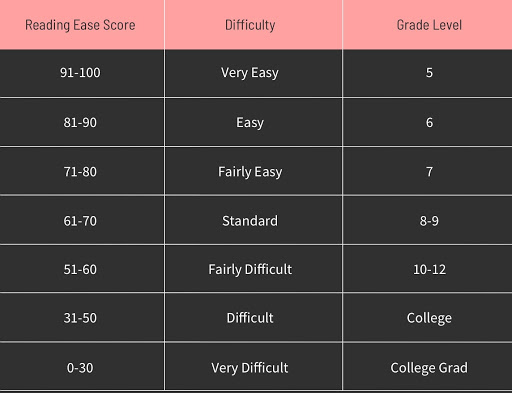
Ecommerce copywriting plays a vital role in driving sales and conversions for online stores. This type of writing often uses persuasive language, clever wordplay, and other techniques to get customers interested in a product or service.
However, with the advent of machine learning techniques, ecommerce copywriting has become even more effective.
Machine learning algorithms can be used to analyze customer behavior and preferences to determine which words, phrases, and images are most likely to lead to increased sales.
By predicting how different types of content will be received by customers, machine learning can help ecommerce businesses craft highly effective marketing campaigns.
For example, machine learning can be used to detect patterns in customer reviews that could reveal an underlying sentiment about a certain type of product or service.
Machine learning algorithms can also be used to identify potential customer segments based on their buying history or online activity.
By adapting their copywriting according to this data, businesses can target specific groups who may be more likely to purchase their products or services.
Another advantage of using machine learning for ecommerce copywriting is that it allows companies to measure the efficacy of their campaigns over time.
Data collected from previous campaigns can be analyzed and used as a benchmark for future campaigns. In doing so, companies can optimize their strategies with more precision and efficiency than ever before.
All in all, ecommerce copywriting is becoming increasingly sophisticated thanks to advances in machine learning technology.
By leveraging predictive analytics and other types of data science tools, companies can create highly targeted marketing messages that are tailored towards particular customer segments and optimize their campaigns.
Test Using a Click-Through CTA

Machine learning is now being used to create powerful tools for ecommerce copywriting, helping companies generate higher click-through rates and product conversions.
Using a click-through CTA test is one of the most effective ways to measure the success of your copywriting efforts.
This type of testing will allow you to determine which pieces of content are more likely to lead to successful sales.
The idea behind a click-through CTA test is simple – by tracking which pieces of content get clicked on the most, you can make informed decisions about what type of copy works best with your target audience.
In order to do this, you’ll need access to data that shows how people interact with your website and which pieces of content they’re drawn to.
With machine learning technology, this data might come in the form of user behavior analytics or other metrics related to customer engagement.
Once you have collected this data, you can use it in two main ways: firstly, you can look at specific types of interaction with each piece of content and see if there are patterns that indicate which pieces are more likely to lead customers.
Down the sales funnel; secondly, you can use AI algorithms and predictive models to identify the characteristics that make certain types of copy more successful than others.
For example, if an AI algorithm notices that certain pieces tend to get clicked on more often than others, then it might be able to suggest changes or improvements.
This kind of machine learning-driven analysis can be extremely helpful when it comes to optimizing your ecommerce copywriting efforts – but only if you have a clear understanding as to why certain pieces are performing better than others.
By combining data from customer behaviors and interactions with AI algorithms, businesses can gain valuable insights into their content marketing strategies.
Make informed decisions about how their copy should be crafted in order for it to be most effective at driving sales.
However, it’s important not just focus on clicks when assessing the effectiveness of your ecommerce copywriting – after all, clicks don’t always translate into sales or other desired outcomes such as newsletter subscriptions or social shares.
Therefore, it’s important that alongside click through rate tests businesses also track conversion rate and other key metrics such as time spent on page or number of repeat visits from customers before they complete a purchase.
This way, businesses can ensure that their copy not only encourages clicks but also drives actual sales or other desired outcomes too.
Ultimately, using machine learning methods like a click-through CTA test is one way that businesses can measure the success of their ecommerce copywriting efforts in order optimize them for maximum ROI.
By combining user behavior analytics with predictive modeling techniques businesses can obtain detailed insights into how customers interact with their website and what kind of content gets them clicking.
Allowing them craft more effective copy designed specifically around customer needs and preferences
Build Anticipation in Your Copy

With ecommerce copywriting, it’s important to create anticipation in your copy.
Anticipation is key in increasing conversions, as it helps communicate the value of a product or service while building excitement and engagement with prospective customers.
But what are the best strategies for creating anticipation in ecommerce copywriting?
The answer lies in the power of machine learning. Machine learning can help us understand customer behavior and identify patterns that can be used to create persuasive and highly effective copy.
Here are three key tips backed by machine learning that will help you build anticipation in your ecommerce copywriting:
1. Use psychology-based techniques: One of the most powerful ways to create anticipation is through psychological techniques such as progressive disclosure and loss aversion.
For example, you could use progressive disclosure to reveal a product’s features one at a time, which creates suspense and keeps readers engaged as they await the next feature.
Loss aversion is another technique where you list all the benefits a customer stands to lose if they don’t take advantage of the offer immediately – this creates urgency and encourages purchase decisions quickly.
2. Optimize for peak times: If you know when your target audience is most active online, you can optimize your ecommerce copywriting for those peak times to maximize engagement and conversions.
Machine learning can provide insights on when shoppers are most likely to buy and how long it takes them to make a decision after visiting your page.
This information should be used to inform targeting efforts throughout various channels like paid search, email campaigns, etc.
3. Personalize with data-driven marketing: With data-driven marketing, you can use machine learning algorithms to predict customer behaviors based on past purchases or browsing history so that you can personalize each message.
This approach allows you to anticipate what customers need before they even know it themselves – making sure that each interaction feels customized and tailored just for them, which builds trust with prospective customers.
In conclusion, building anticipation in ecommerce copywriting is essential for any online business looking for success – but it requires more than just creative storytelling.
It requires an understanding of customer behavior driven by machine learning insights so that content can be personalized around each individual recipient’s needs or preferences.
By utilizing these three key tips backed by machine learning models – psychology-based techniques, optimizing for peak times, and personalizing content with data-driven marketing businesses can ensure that their messages create maximum engagement.
Try To Stay Under 300 Words:

The use of machine learning in ecommerce copywriting can have a significant impact on the success of any business.
Machine learning is an artificial intelligence technique that uses data to automate processes and provide more accurate results.
With ecommerce copywriting, machine learning can help to create more effective content that resonates with customers and drives conversions.
One of the most important aspects of using machine learning in ecommerce copywriting is that it enables businesses to create content that accurately reflects customer needs and interests.
By analyzing customer behavior, machine learning can identify patterns in customer behavior and tailor content accordingly.
This means that businesses can craft more engaging and persuasive copy that resonates with customers and encourages them to take action.
Machine learning also helps businesses produce content faster than ever before.
By automating certain elements of the process, such as keyword research, businesses can quickly create optimized content for their website or blog without sacrificing quality.
This allows businesses to focus their efforts on creating higher-quality content that engages their customers in a meaningful way.
When it comes to understanding how well your ecommerce copywriting performs, machine learning can provide invaluable insights.
Businesses can use analytics tools powered by machine learning to track engagement metrics such as page views, time on page, or conversion rate.
By tracking these metrics over time, businesses can determine which types of content are most effective at driving conversions and adjust their strategies accordingly.
Finally, using machine learning in ecommerce copywriting helps businesses optimize and personalize their content for each individual user.
By leveraging data from previous visits, this technology allows companies to tailor the messaging they display according to each user’s past interactions with the site.
This way, customers are presented with more relevant information that is tailored specifically to them based on their past behaviours online.
Overall, using machine learning in ecommerce copywriting provides countless benefits for any business looking to grow its revenue through digital marketing efforts.
From providing more accurate insights into customer behavior, to accelerating the process of creating optimized content; there’s no doubt that utilizing this technology will give any company a competitive edge.
Avoid Negative Language:
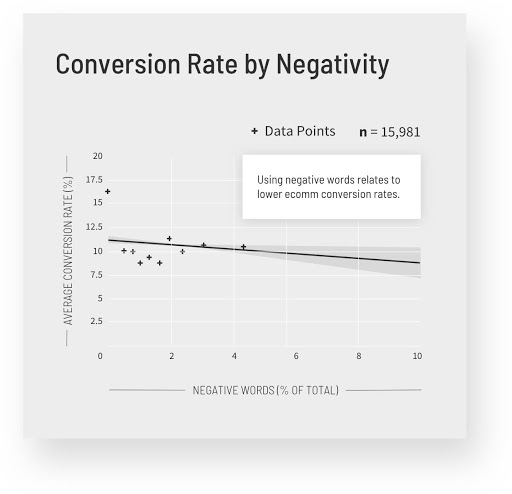
Ecommerce copywriting is an increasingly important element of successful web-based businesses.
In today’s digital world, it is critical to create copy that resonates with target audiences, helps them make better decisions, and ultimately drives more sales.
To achieve this goal, many businesses are turning to automated tools and machine learning techniques to help create higher quality content faster.
This article will look at 5 statistics about ecommerce copywriting backed by machine learning and discuss the implications for businesses looking to refine their online presence.
The first statistic deals with the impact of customer reviews on buying decisions.
Research from Harvard Business School found that when customers were presented with a product review before making a purchase decision, they had a much higher chance of making a purchase than when presented.
As such, creating a system that can identify relevant customer reviews quickly and easily can be extremely beneficial for modern ecommerce stores.
Machine learning algorithms can be used to effectively scan through large volumes of data to find customer reviews that meet specific criteria and could be useful in influencing potential buyers.
Another useful statistic relates to the length of ecommerce copywriting pieces. Studies have shown that shorter pieces tend to perform better in terms of conversions.
This is because longer pieces may require more time and attention from readers which could cause them to get distracted or leave before taking action.
Machine learning can help here by analyzing past pieces and identifying those elements which work best within shorter pieces so they can be incorporated into future ones quickly and efficiently.
The third statistic is related to the use of keywords in copywriting pieces. Studies have shown that including keywords in titles or headings can increase click-through rates significantly as search engines will pick up these words more easily.
Furthermore, using appropriate long-tail keywords within the body of a piece can also improve visibility on search engine results pages (SERPs).
The use of natural language processing (NLP) algorithms in combination with machine learning techniques can help identify high performing keywords for any given topic quickly and accurately.
The fourth statistic focuses on the use of visuals in ecommerce copywriting pieces, specifically images and videos.
Research suggests that incorporating visuals into copies increases engagement levels significantly compared to text-only versions while also decreasing bounce rates due to improved readability.
Levels experienced by viewers who are able to process visual information quicker than written word alone would allow for.
Machine learning algorithms can be used here too as they’re able to analyze large amounts of data quickly in order to identify the types of visuals which typically perform best in different contexts.
Such as product images versus lifestyle shots – so they can be incorporated into future copies accordingly without manual intervention.
Finally, this article looks at the importance of avoiding negative language when creating ecommerce copy writing pieces as it has been proven repeatedly that positive language works far better in most contexts.
Due to its ability evoke emotions from readers which leads directly into increased conversions such as purchases or sign-ups being made on sites where these pieces appear prominently.
Ecommerce Copywriting Benefits:

Ecommerce copywriting is more than just writing sales pitches. It can be an incredibly powerful tool for businesses to engage with their customers and drive conversions.
Copywriting provides the opportunity for companies to gain a competitive edge, build trust with their target audience, and craft persuasive messages that motivate customers to take action.
One of the primary benefits of ecommerce copywriting is its ability to increase website traffic.
When done correctly, copywriting can help attract web visitors from relevant searches and organic content marketing efforts.
By including keywords in headlines and body copy, ecommerce websites have the potential to reach out to a broader target audience who may not have otherwise heard about their products or services.
Furthermore, crafting persuasive copy can make users more likely to click on links leading back to the website and explore further.
Ecommerce copywriting also helps businesses build trust with their customers. It plays an important role in setting expectations and meeting them by demonstrating relevance and expertise.
Companies can do this by supplying detailed product descriptions and emphasizing helpful features that set their products apart from competitors.
This ensures that customers know what they’re buying before they make a purchase decision, which helps reduce buyer remorse after checkout has been completed.
Additionally, ecommerce copy can be used as a platform to inform customers about any new updates or discounts being offered on products or services.
Finally, effective ecommerce copywriting is essential for driving conversions on your website or store front.
Persuasive messages motivate visitors to take action by providing compelling reasons why they should purchase your company’s offerings rather than competitors’ products or services.
Copywriters can employ psychological triggers like scarcity or urgency when crafting messages that spur people into making decisions quickly or create FOMO (fear of missing out).
Moreover, powerful calls-to-action (CTA) encourage users to click through and complete desired actions such as signing up for a newsletter or completing a purchase transaction on an online store front.
In conclusion, effective ecommerce copywriting offers numerous benefits for businesses seeking increased website traffic, improved customer relationships, and higher conversion rates.
By taking advantage of persuasive messaging techniques such as keyword optimization, expertise building exercises like detailed product descriptions and trust-building elements like social proofing statements companies.
To maximize the effectiveness of their content marketing efforts while simultaneously creating better customer experiences on their websites or store fronts.
Quick Links:
- Ecommerce SEO Agency: How to Choose The Best One
- Essential Growth Hacking Strategies: To Build Best Ecommerce Store
- Instagram Influencer Marketing: Fuel Your Ecommerce Store
- How to Conduct Online Market Research: Ways To Grow Ecommerce
- Ecommerce Niches Really Lead To Riches: Targeting Niche Audiences
- Top eCommerce Podcasts: Listen The Best Now
- Ecommerce With Quality Budget Hosting and Free Software Solutions
- Want Success on eBay: Better, Never Sell These Items
Conclusion: Ecommerce Copywriting Sales
Taking the time to craft clever and effective ecommerce copywriting can lead both new and existing customers to your products.
Utilizing a mix of common advertising tactics, such as emotionally-driven imagery, questions, and storytelling will create an engaging experience for readers.
By writing useful content that is easy to understand and authenticity in your copy, you are giving customers what they need while making your product seem even more desirable.
Additionally, being aware of the online conventions commonly used in your audience’s field or by other competitors gives you an advantage when optimizing for SEO.
Your sales copy should be attractive but it should also be crafted with the understanding that there are still human beings on the other end reading all that you have written.
If done correctly then putting these elements into practice can provide great returns in terms of converting site visitors into paying customers.
All things considered, each phrase you write has potential so aim for success with every word!
